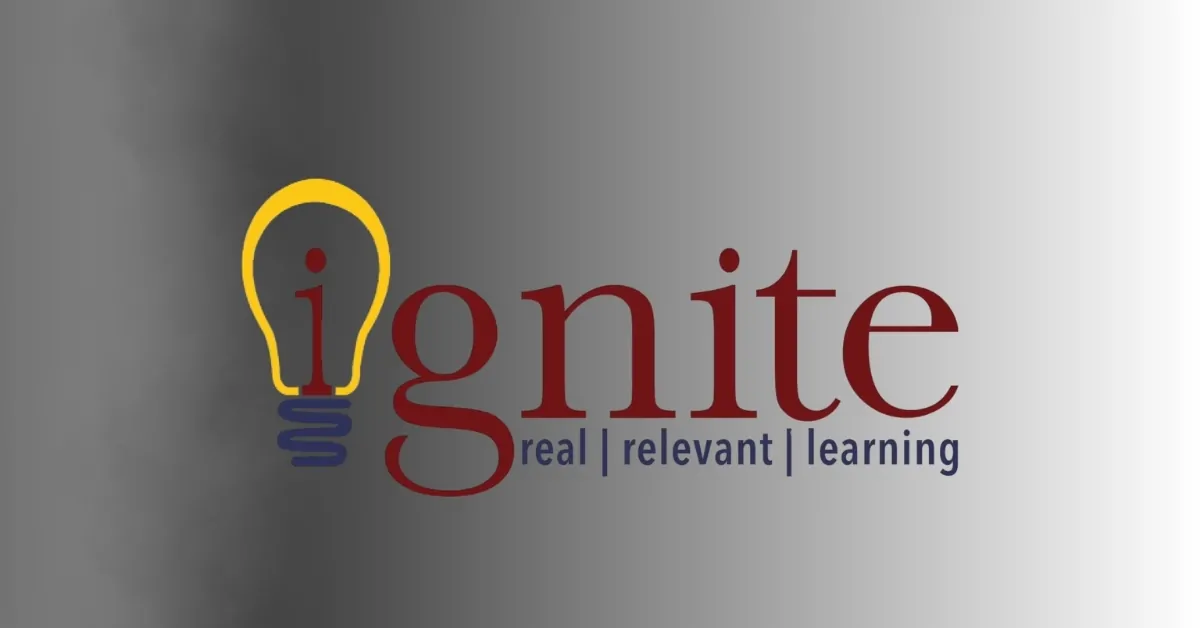Dental care in America is expensive, but exactly how expensive depends heavily on where you live.
According to 2025 Stateline data on common procedures and insurance costs, residents of Illinois, Mississippi, and Utah are paying some of the highest out-of-pocket prices for dental treatments, while Alabama, Hawaii, and Colorado enjoy some of the lowest.
At the same time, states like Alaska and North Dakota lead the nation with the most expensive dental insurance premiums, while West Virginia and Alabama sit at the bottom with the most affordable plans.
This creates a dual landscape: in some states, dental procedures are costly but insurance is relatively affordable, while in others, the reverse is true.
Key Takeaways
Out-of-Pocket Costs
When comparing dental care costs across states, experts often use scaling and root planing (deep cleaning) as a benchmark. It’s one of the most common non-routine procedures, billed per quadrant of the mouth, and costs can vary widely.
According to a 2025 national survey of dentist charges, the price of a single quadrant ranges from as low as $100 to nearly $500, depending on location.
States With the Highest Deep Cleaning Costs (2025)
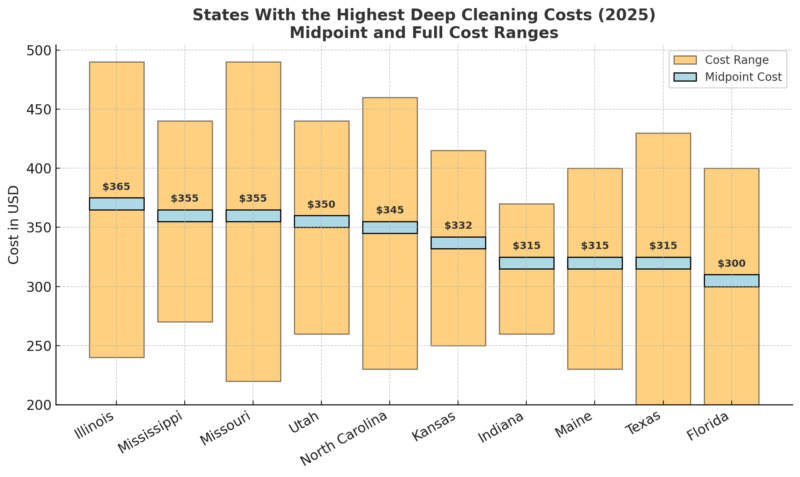
What stands out immediately is how strongly Midwestern and Southern states dominate the high-cost bracket. Illinois leads with an average of $365 per quadrant, which translates into nearly $1,500 for a full-mouth deep cleaning.
According to the 2025 survey, this is almost two-and-a-half times what someone in Alabama might pay for the exact same treatment. Mississippi and Missouri follow closely, both averaging around $355, showing that the central U.S. is particularly costly for periodontal care.
Another notable observation is that large, diverse states like Texas and Florida also appear in the top 10, each averaging $315 and $300, respectively. This suggests that even in states with many dentists and higher competition, costs don’t always fall.
Instead, factors such as urban rent, malpractice insurance premiums, and labor costs in cities like Houston, Dallas, or Miami may offset the benefits of provider density.
In states like Utah and North Carolina, where the average is above $340, the high costs reflect growing urban populations and rising overhead for dental practices. The trend suggests that living in fast-growing states often comes with an increased dental bill.
In short, patients in these 10 states can expect to pay more than $1,200–$1,400 for a complete deep cleaning procedure, sometimes more than double the national low end.
States With the Lowest Deep Cleaning Costs (2025)
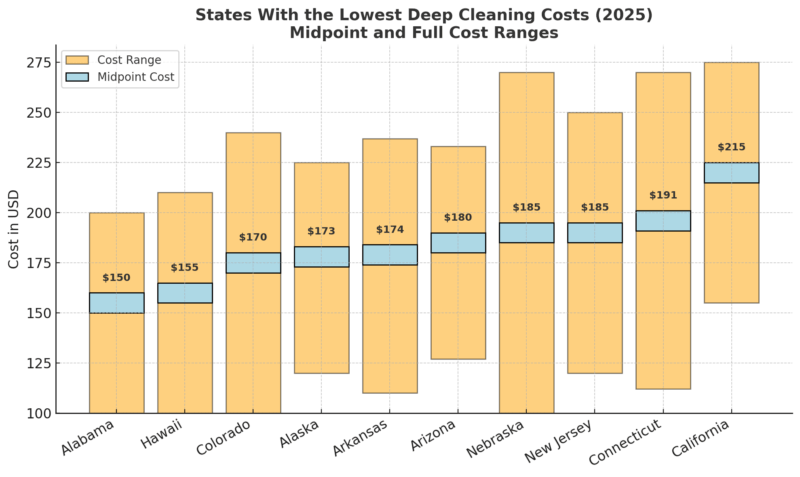
On the opposite side of the spectrum, the lowest-cost states are dominated by the South and West, with Alabama leading at just $150 per quadrant. That means a full-mouth deep cleaning averages only $600, less than half the price of Illinois.
Hawaii comes next at $155, which may seem surprising given the state’s notoriously high cost of living. However, according to regional healthcare cost analysts, Hawaii’s relatively strong dentist supply per capita and preventive care culture help keep certain dental treatments more affordable than one might expect.
Colorado, Alaska, and Arkansas also show relatively modest costs, averaging between $170 and $174. These figures highlight that even geographically remote states like Alaska can deliver competitive dental prices when compared to the national median.
States such as Nebraska, New Jersey, and Connecticut, despite having higher average household incomes, still fall into the affordable bracket, suggesting that strong insurance coverage penetration and competition among providers help stabilize prices.
California rounds out the list at $215, which is higher than the other low-cost states but still far below the $300–$365 averages seen in Illinois or Mississippi. The range within California ($155–$275) also reflects wide geographic variation: patients in rural counties may pay far less than those in Los Angeles or San Francisco.
The takeaway: residents in these 10 lower-cost states save hundreds of dollars per procedure, with average full-mouth deep cleanings ranging between $600 and $860, compared to over $1,400 in the most expensive states. For families without dental insurance, this difference could easily mean the ability to access care more regularly.
Insurance Premiums: The Other Side of the Equation
Out-of-pocket prices tell only half the story. According to MoneyGeek’s 2025 analysis of Affordable Care Act (ACA) marketplace dental plans, average stand-alone dental insurance premiums also vary significantly by state.
States With the Highest Average Monthly Premiums (2025)
Rank
State
Avg. Monthly
Avg. Annual
Avg. Deductible
1
Alaska
$50
$599
$50
2
North Dakota
$40
$486
$63
3
Montana
$37
$446
$57
4
Hawaii
$34
$411
$48
4
Oregon
$34
$410
$59
6
Iowa
$32
$379
$48
7
South Dakota
$31
$375
$63
7
Wyoming
$31
$367
$63
9
Arkansas
$30
$357
$51
10
Arizona
$29
$342
$90
The states with the highest premiums are, unsurprisingly, the ones with smaller populations and fewer insurance carriers. Alaska tops the list at $50 per month, or roughly $599 annually, which is almost three times higher than what residents in West Virginia pay.
According to CMS marketplace data, this isn’t due to unusually high procedure prices; Alaska actually sits on the more affordable end for deep cleaning services, but rather the limited competition in its insurance market. With fewer insurers bidding for enrollees, prices climb, and consumers shoulder the difference.
North Dakota and Montana follow at $40 and $37 per month, respectively. These states face similar dynamics: rural geographies, sparse populations, and fewer provider networks drive up insurance costs.
Interestingly, Hawaii also appears near the top, at $34 monthly, but unlike Alaska, its out-of-pocket procedure costs are among the lowest in the nation. That creates a scenario where residents may end up overpaying for premiums compared to the actual local dentist fees.
Other states in this high-premium group, like Oregon, Iowa, and South Dakota, fall into the $30–$34 range. These figures are still above the national average, reflecting the way regional insurance competition, or the lack of it, directly shapes consumer costs.
In short, if you live in one of these states, you may have to budget $400–$600 per year just to stay insured, regardless of whether you need major dental work or not.
States With the Lowest Average Monthly Premiums (2025)
Rank
State
Avg. Monthly
Avg. Annual
Avg. Deductible
1
West Virginia
$18
$218
$45
2
Alabama
$21
$256
$52
2
Tennessee
$21
$246
$61
4
Illinois
$22
$260
$65
5
Florida
$23
$277
$59
5
Missouri
$23
$282
$56
5
Virginia
$23
$276
$59
8
Georgia
$24
$285
$63
8
Indiana
$24
$292
$49
10
Kansas
$25
$298
$61
At the opposite end, West Virginia offers the cheapest average premiums at just $18 per month, or $218 annually. For residents, that’s less than half the cost of a single routine cleaning and exam without coverage.
According to MoneyGeek’s analysis, this low premium environment comes from a stronger mix of insurers competing in the state’s exchange and relatively stable local procedure prices.
Alabama and Tennessee are tied for second at $21 per month, showing that the Southeast offers some of the most affordable insurance options in the country. Yet, Alabama also ranks as the very cheapest for out-of-pocket deep cleaning procedures, meaning residents benefit on both sides: low premiums and low dentist fees.
That combination makes Alabama arguably one of the best states for overall dental affordability in 2025.
Other states in this group, such as Illinois, Florida, and Virginia, hover around $22–$23 monthly, which is still far below the premiums paid in the Northwest and Alaska. Missouri and Indiana also make the list, despite showing higher-than-average procedure costs, suggesting that affordable premiums can help offset expensive treatment prices in certain markets.
Taken together, these states demonstrate that insurance affordability doesn’t always align with procedure costs, but when it does, like in Alabama, it can drastically improve access to care.
For consumers, the lesson is clear: don’t assume high premiums mean high costs of treatment, or vice versa. Evaluating both factors side by side is the only way to understand the real financial picture.
National Benchmarks for Perspective
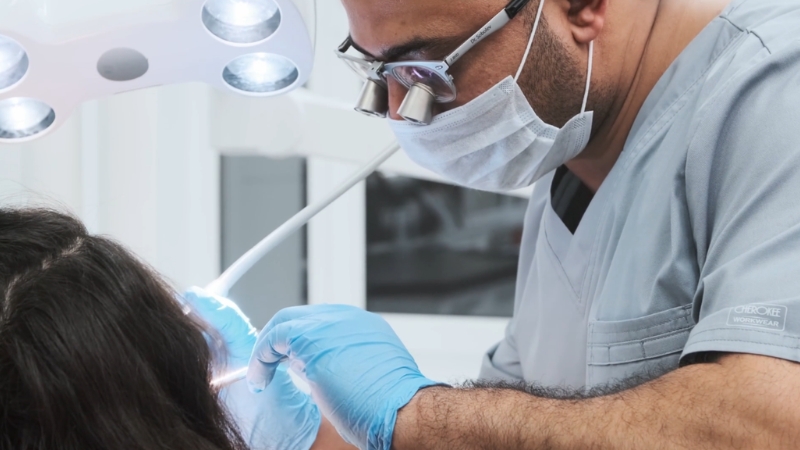
These figures highlight just how steep the difference is when comparing states like Illinois vs. Alabama or Alaska vs. West Virginia.
Dental Care Beyond U.S. Borders
While state-by-state differences in the U.S. are striking, many patients are beginning to look abroad for affordable alternatives. One of the most common examples is implant dentistry, particularly in countries such as Turkey.
According to industry data, the competitive All-on-6 dental implants in Turkey packages offered in cities like Antalya often cost just a fraction of what patients would pay in the United States or the United Kingdom. To find out more, read here.
Price Comparison for Full-Arch Implant Treatments
Procedure
UK
U.S.
Turkey
All-on-4
£7,000 – £16,000
$16,000 – $30,000
£1,400 – £3,500
All-on-6
£9,500 – £19,000
$20,500 – $36,000
£2,300 – £5,000
All-on-8
£14,000 – £30,000
$28,500 – $40,600
£3,100 – £7,500
In the U.S., an All-on-6 procedure can cost over $30,000 per jaw, while in Turkey, the same treatment may start around £2,300 (about $3,175), including six Straumann implants, panoramic X-rays, and a full care package.
Clinics in Antalya, for instance, structure complete bundles that cover consultation, VIP transfer, accommodation, and follow-up visits across two trips lasting 5–6 days each.
The key insight: while Illinois patients might spend over $1,400 just for a deep cleaning, overseas patients are completing full-arch implant procedures for not much more. This sharp contrast underscores how international dental tourism is reshaping the affordability discussion, offering Americans alternatives when local care feels financially out of reach.
Why Costs Vary So Much
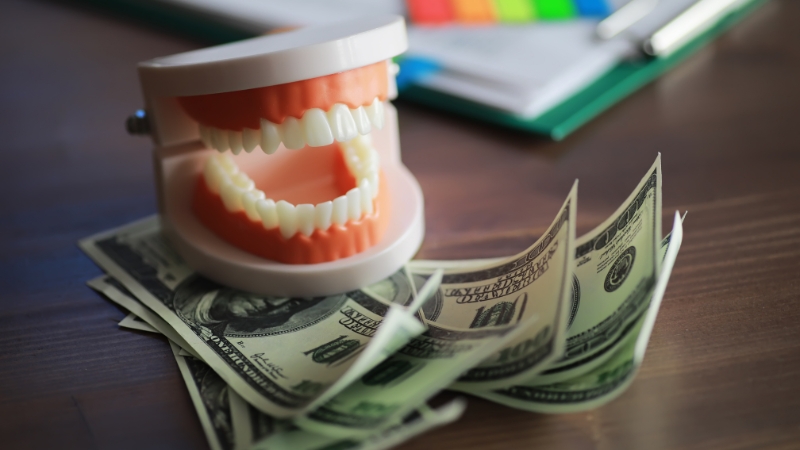
Several factors drive these state-by-state disparities:
- Dentist Supply: States with more dentists per capita (like Colorado) often have lower procedure prices due to competition.
- Overhead Costs: Rent, wages, and malpractice insurance are higher in states like Illinois, pushing up patient bills.
- Insurance Market Structure: In states with fewer insurers (e.g., Alaska, North Dakota), premiums climb because of limited competition.
- Medicaid Coverage: Some states only cover emergency dental under Medicaid, while others provide preventive and restorative services, shifting more costs to private payers. According to the American Dental Association, Medicaid dental coverage is one of the strongest predictors of out-of-pocket exposure.
Methodology
This article was crafted using 2025 data from national dental fee surveys and Affordable Care Act (ACA) marketplace premium reports. State-level deep cleaning (scaling and root planing) costs were compared by calculating the midpoint of published ranges to allow consistent ranking.
Insurance premium figures were drawn from CMS exchange data compiled by MoneyGeek, focusing on average monthly, annual, and deductible values. National benchmarks for routine exams, crowns, and root canals were added to contextualize state-by-state differences.
To broaden the perspective, international cost comparisons were included using published UK, U.S., and Turkey implant pricing. Finally, analysis was provided to highlight regional trends, economic drivers, and mismatches between procedure prices and insurance costs.
Related Posts:
- 10 Lowest IQ States in US 2025 - Full Data,…
- 5 States With the Highest and 5 Lowest Healthcare…
- Dental Care in the US: What the Numbers Reveal About…
- US vs Europe Healthcare in 2025 - Costs, Quality of…
- Urgent Care vs. Emergency Room - Costs, Speed, and…
- US Adults Want Government to Cut Child Care Costs,…






